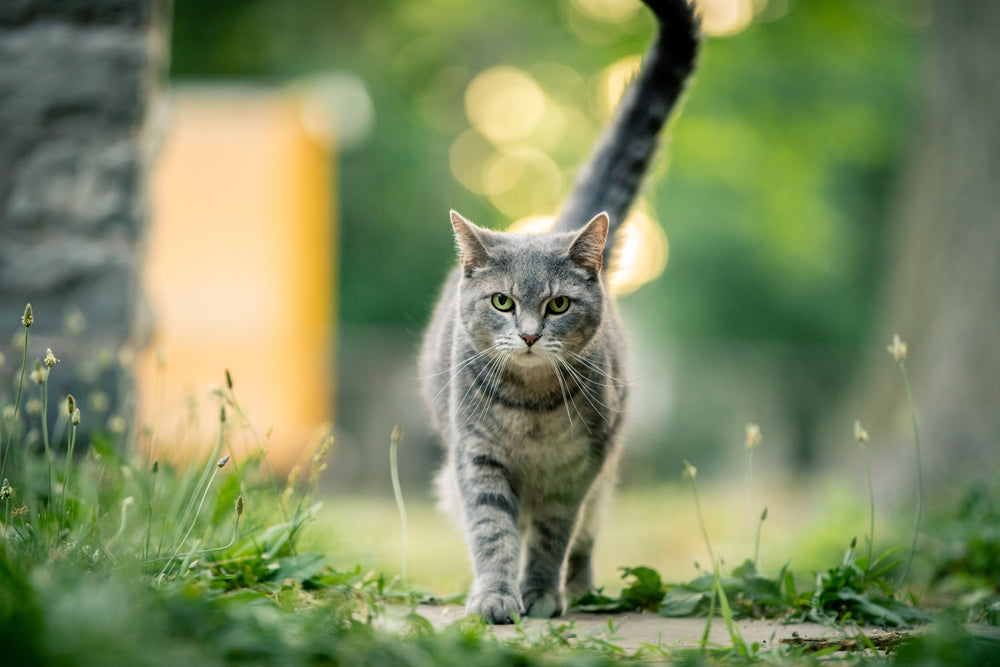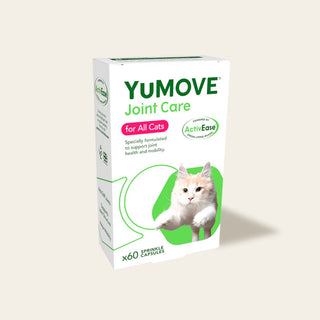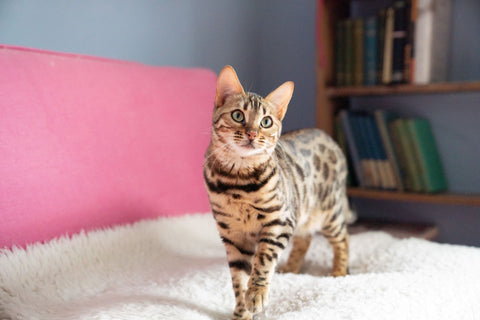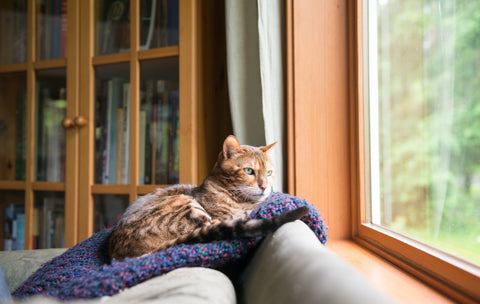

Cat Body Language: What Do They Mean?
You could say many things about cats. They’re graceful. They’re elegant. They’re independent. But what you probably wouldn’t say is that they’re super expressive and easy to read.
While our feline companions can be mysterious, though, they do give us some hints about what they’re feeling and what they want out of life (a mouse to catch? Second breakfast? Praise and adoration?).
It’s all a matter of learning to read the sometimes-subtle nuances of cat posture and body language. Body language can show anything from stress to mobility issues. So, here’s a quick overview of what you need to know.
Cats are subtle creatures with a great poker face
First things first: you need to be extra alert when watching your cat’s posture. That’s because, compared to some other animals (*cough* dogs), cats like to keep it understated.
As the good people at Battersea have pointed out, domestic cats evolved from the African Wildcat – a solitary species with plenty of natural adversaries and predators. Ancient felines had a real interest in not letting other savannah dwellers see when they were stressed, scared or in discomfort. After all, it could mean becoming dinner during a vulnerable moment.
Modern house cats probably aren’t going to be attacked by hyenas, but they’ve inherited the same instinct for playing it cool. In fact, they even have fewer facial muscles than dogs and other more social creatures.
The key point here is that signs of feline distress can be easy to miss if you’re not paying close attention.

When should I be on the lookout for changes in my cat’s posture?
It’s always a good idea to notice what’s going on with your cat’s body language, but it’s especially important to pay attention to their posture when you’re interacting with them.
Not only will this help you to understand whether your cat likes or dislikes what you’re doing, but they may also be at their most expressive when you’re interacting with them and they’re directly trying to communicate.
What do some common cat postures mean?
Here’s what you should know about a few common cat postures and behaviours:
Your cat approaches you with their tail raised upright (and maybe curled at the tip)
Meaning: A happy, open and social cat
This is one of the clearest signs of a happy, friendly cat that’s eager to get to know you. If a cat approaches you calmly with their tail raised, you should acknowledge their greeting – maybe with a few words, and maybe with a gentle head rub if they allow it.
Your cat is low to the ground in a crouched ball-like shape
Meaning: A stressed, frightened cat getting ready to run
When cats are stressed and scared, they tend to get low to the ground and make themselves as small as possible. This is a defensive posture that makes them harder to spot, and makes it easier for them to spring off and run. If your cat is exhibiting this posture, back off and give them some space. Ideally, make sure there’s a safe hiding place nearby for them to retreat to as well – like a cat box or an elevated perch. If your cat remains withdrawn for a long time, they may be sick or in discomfort.

Your cat is nuzzling you and rubbing themselves against your legs
Meaning: A confident cat that’s marking their territory (and getting rid of unfamiliar scents)
It’s natural to assume that if a cat’s rubbing up against your legs, they’re showing you lots of affection. After all, it’s practically a hug, right? But while it’s true that cats rubbing against humans is a welcoming behaviour, the main reason they do this is to mark their territory with their scent. Expect your cat to be particularly keen on rubbing against your legs if you’ve just come home after a day out in an unfamiliar environment. Especially if you crossed paths with strange cats while out and about.
Your cat is standing sideways with an arched back
Meaning: A stressed, angry cat that’s ready to fight
When cats feel threatened and angry, they will generally try to make themselves look as big and intimidating as possible. One common way they’ll do this is by arching their back and standing more side-on. They might also hiss and make other irritated sounds. It’s a good idea to back off and give your cat some space if they’re doing this. Sometimes, aggression can be a response to discomfort or physical irritation.

Your cat has rolled onto their back and is showing their belly
Meaning: A relaxed cat displaying trust (but be careful about going in for belly rubs)
When a cat’s rolled over onto their back and is showing their belly, they’re letting you know they’re comfortable around you and trust you. So, why have so many people who’ve gone to rub their cat’s bellies found themselves being instantly scratched and bitten? Simple. Unlike dogs, cats usually don’t like belly rubs. They’ll show their belly as a sign of trust, but if you try to touch it, they’ll take that as an immediate betrayal. Next time (once the claw marks have healed), show your appreciation with some gentle head scratches instead.
When should I be worried about my cat’s posture?
Cats adopt a range of different postures depending on their mood, their environment, and all sorts of other factors.
While every cat will get stressed, anxious, or irritated at times, it may be time to act if your cat’s posture is showing signs of fear, anger, or irritation over a prolonged period of time.
When your cat is constantly arching their back and acting aggressive, or trying to withdraw into a safe hiding place, they may be struggling with some illness or discomfort they can’t properly communicate. You should consider taking them to the vet to get checked out, especially if your cat seems to be acting out of sorts for no clear reason.
For highly strung cats who need a bit of extra support to de-stress and relax, consider trying YuMOVE Calming Care for Cats, our potent feline calming formula developed with natural, scientifically proven ingredients.




